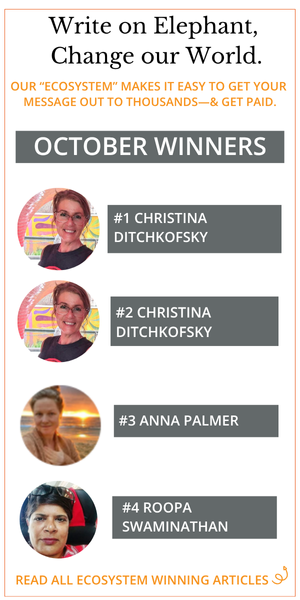View this post on Instagram
Are a positive attitude and outlook a challenge for you?
I’m not just talking about affirmations and mantras; I’m talking about the pull to gravitate toward and focus on the negative aspects of your life versus the positive ones.
All of us want to be happy.
The true binding material of the human race is the collective wanting of the following things: love, safety, support, connection, a feeling that we belong, and being happy or content (which are two different vibrations, but you get the idea).
No one wants to feel like crap or live in fear, but, for a lot of us, this seems to be our resting state.
Why? Why is it so hard to snap out of those bad moments and propel ourselves toward more positive or good-feeling moments? Why is it so challenging to stay in the “happy zone”?
The answer lies in our brain, or more specifically, the way our brain learned to survive.
Long ago and far away, our ancestors sought out two experiences: to seek those things that were pleasurable (food, shelter, and sex) and stay away from things that were painful (predators, starvation, and outside aggression).
Now, you may be thinking, “Well, isn’t it the same today?”
It is, except that pleasure and pain have a lot more manifestations now. We also have to keep in mind that, sometimes, pleasure brings us pain (we drink and then get a hangover) and pain brings us pleasure (a hard workout yields a more toned body).
From a survival standpoint, the brain wants to know more about the possible painful stuff versus the pleasurable stuff. Why? Because if it scans for pleasure over pain, it could lead you to a threat and possible death. If it ignores the tiger while focusing on the warmth of the sun, you will probably get mauled.
Also, we learn more from pain than from pleasure, from a survival standpoint.
As Dr. Rick Hanson says, “Pain has more urgency than pleasure.”
Because of this, the brain developed a “negativity bias.”
Our negativity bias is always working and has gotten smarter over time (the brain is built to learn). As Hanson says, “Your brain has a hair-trigger readiness to go negative to help you survive. Negative stimuli are perceived more rapidly and easily than positive stimuli. We recognize angry faces more quickly than happy ones; in fact, the brain will react even without your conscious awareness when another person’s face is angry.”
Whoa. That is intense.
Even when we are in a stable environment and are in social engagement mode (or the equivalent of homeostasis in the body and mind), our brain is constantly scanning for threats, scary stuff, disappointments, lions, and tigers. It doesn’t care that we are happily drinking a beer with our best friend; it wants us alive.
This is why it is easier to focus on the one bad review we got over the 100 that were positive. The brain is asking, “Could this possibly kill me? Is my life in danger? How can I stay connected to the herd so I will survive?”
It’s not that you are inherently negative by choice; you are inherently negative because of your built-in negativity bias. It’s like the brain is saying, “It’s not you, it’s me.”
Our brain is so cool, right?
In the book, Hardwiring Happiness, Dr. Rick Hanson explains that negative experiences stick to the brain like Velcro, while positive experiences bounce off like Teflon (I love this analogy!). This is because the brain is more interested in what can hurt you and wants to keep a long-standing record of anything that has, like a built-in checklist. Thanks, brain!
Positive experiences don’t matter as much to the brain, from a survival standpoint.
Our brain is built to learn through our experiences, and as a result, it physically changes because of them. Your brain is different today than it was yesterday or even 15 minutes ago. This process is called experience-dependent neuroplasticity.
The brain adapts, expands, grows, and learns based on what happens to us and what we focus on.
Then, the brain stores this information in two ways: explicit memory and implicit memory.
Let’s break these down.
Explicit memory contains your personal recollections and “declarative knowledge.” It’s a record of everything that has happened to you (events and experiences) and all basic knowledge (like what a knife is or your phone number).
Implicit memory includes the “how-to” part of the equation. This is more “procedural knowledge.” How to drive a car, how you felt when you first fell in love, your assumptions, expectations, emotional life, and your values. This is where all of our “feelings” are stored, and implicit memory has much more of an impact on your life than explicit memory because it is the home of “how” we experience things.
And guess what? Implicit memory is negativity-biased. This is because painful and uncomfortable experiences get stored immediately so the brain can refer to them later. Positive experiences are not as important to the brain because they do not threaten you. Stressful and painful events are prioritized.
When we have a positive experience, we must do the work of what Hanson calls “taking in the good” so that experience gets converted into our neural structure. Remember that experience-dependent neuroplasticity? The brain does that automatically with negative experiences and without any resistance from us because of how it learned to survive.
When we have a positive experience, we want to stay with it for at least 10 to 20 seconds so that it has time to create a physiological change in our neural structure. If we do that enough, we strengthen that structure in the brain.
Let’s do a little experiment.
As you sit reading this, I’m sure positive things are happening all around you: people may be laughing, the sun is shining, your dog nudges you for some love, you are enjoying your lunch, and so on. You get the idea.
Now, notice how you probably don’t pay attention to those things all that much. Maybe you pet the dog for a few seconds, but your mind is focused on what will happen when you get to work. Maybe you get a glimpse of the sun shining through your window, but seconds later your focus is on why the toaster is not working.
This happens to us all day long. There are lots of positive, bright, lovely, beautiful things going on constantly—we just tend to scan for the other stuff: the snarky comment, the traffic, and the coworker who acts like a child. The negativity bias is hard at work looking out for how any of those things could hurt you.
Now, try this. The next time a good moment comes, stop, take a breath, put your hand on your heart and say to yourself, “I take in the good of this moment. I intend to store this in my implicit memory.” Stay with the good feeling for maybe 20 seconds. Allow the neurons in the brain to wire together as you keep your focus on how good you feel.
As you do this more and more, you will grow new neural circuits (or wirings) in the brain that will be easier to return to, while de-stimulating older neural circuits that have been consciously activated for a lot longer. What we pay attention to is the main “shaper” of our brain.
Wow. Pretty cool, right? Understanding our brain is the key to understanding ourselves, our behaviors, our conditioning, and our tendencies.
This is an overview of this concept and many other factors are present when talking about how our brain works. But I wanted to share this information because it is empowering to know why our mind tends to fall back to the more negative or fearful things that happen to us and how we can change our brain material for the better.
When we do mindset work, it is a lot more than just creating good feelings; we are actively teaching our brain how to think and what to focus on. We are developing new brain material, actual stuff we could hold in our hand by taking in the good and focusing on the positive parts of our lives.
This is no longer “hippie sh*t”; it’s tangible, real, and within our power.
The negativity bias will always be working for our safety and survival, but now that we know this, we can work with it. We can notice it and say, “Thanks, brain, for looking out for me!”
The next time something even slightly positive happens, take the opportunity to grow new neural circuits. Stop, breathe, and put your hand over your heart. Stay with the feeling, whatever it is. Absorb it. Revel in it. Enjoy it. Savor it. Take in the good.
You just changed your brain for the better!


 Share on bsky
Share on bsky




Read 37 comments and reply